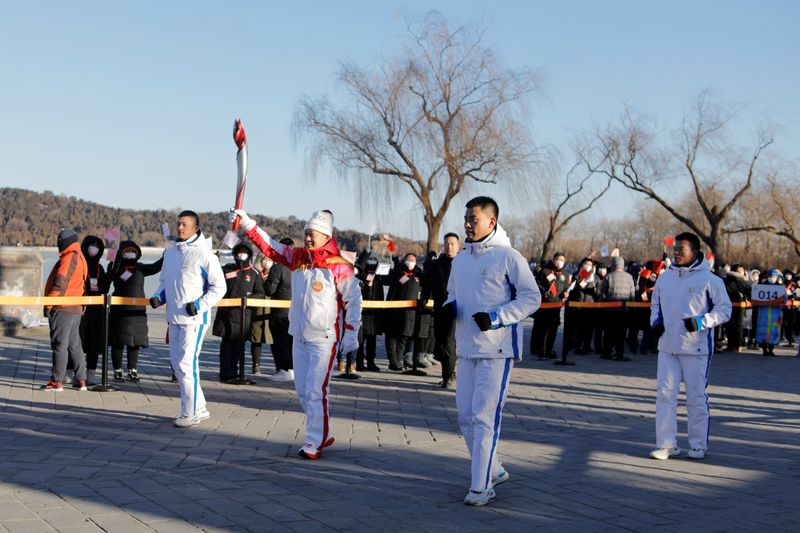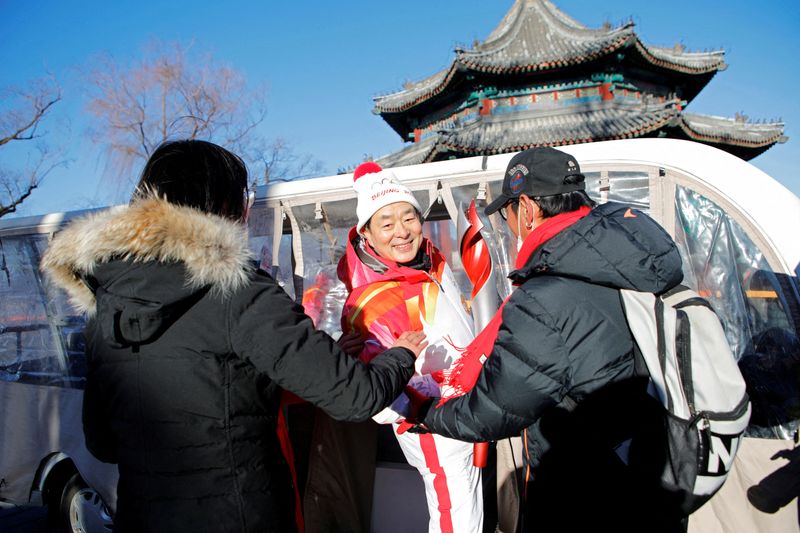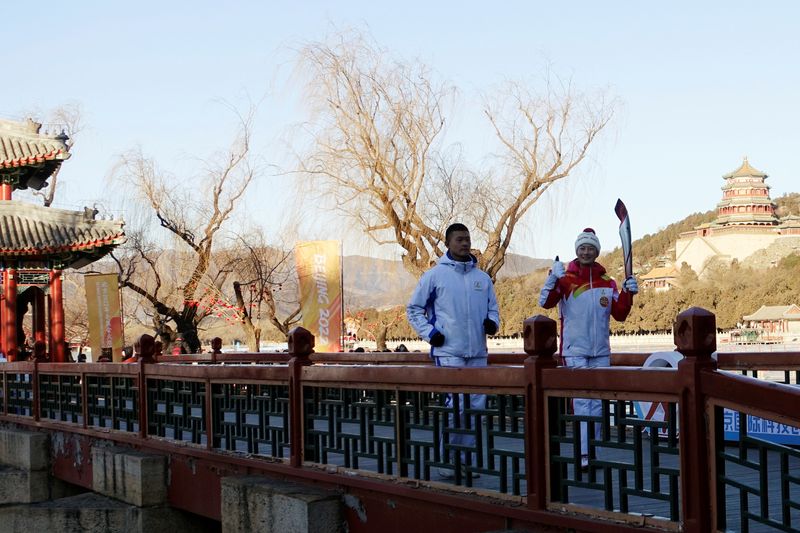BEIJING (Reuters) -The Olympic torch relay began its final stretch on Friday through former imperial gardens and along an ancient canal, with Chinese Olympic medallist Ding Ning among those carrying the flame along a route shortened to three days because of COVID-19.
Torch-bearers on a cold sunny morning ran past the bridges, pagodas and frozen lakes of the Summer Palace, built by China’s last imperial dynasty, and later a stretch of the Grand Canal in eastern Beijing, an ancient waterway linking the capital to the south.
The route taking the flame to landmarks including the Great Wall is far more modest than the globe-spanning tour ahead of Beijing’s 2008 Summer Games.
“Then (in 2008), I was still striving towards my Olympic dream,” said Ding, a table tennis player who won gold at the 2016 Games in Rio de Janeiro and silver in 2012. “Now to be able to participate in the Winter Olympics as a torch-bearer is a rare chance, so I’m very happy.”
Other torch-bearers on Friday included a Beijing opera artist and the head of a traditional Chinese medicine hospital.
Near the Grand Canal, selected spectators, who had arrived before the relay holding national flags, cheered as one torch-bearer passed on the flame to the next.
“After I’ve finished running, I am still very excited. I am still bursting with enthusiasm. I feel very proud,” said Cai Rui, who has worked as a firefighter for 18 years.
As in 2008, the relay will end with the lighting of the Olympic cauldron at the opening ceremony at the Bird’s Nest Stadium.
The Games are taking place inside a “closed loop” because of COVID-19, keeping competitors and other Olympics personnel away from the public, and will be attended only by small, selected audiences.
(Reporting by Stella Qiu, Florence Lo and Ryan Woo; Writing by Gabriel Crossley; Editing by Peter Rutherford & Shri Navaratnam)
























